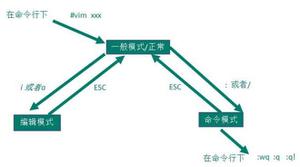Python中的threading模块是什么

threading提供了一个比thread模块更高层的API来提供线程的并发性。这些线程并发运行并共享内存。
下面来看threading模块的具体用法:
一、Thread的使用,目标函数可以实例化一个Thread对象,每个Thread对象代表着一个线程,可以通过start()方法,开始运行。
这里对使用多线程并发,和不适用多线程并发做了一个比较:
首先是不使用多线程的操作:
代码如下:
#!/usr/bin/python#compare for multi threads
import time
def worker():
print "worker"
time.sleep(1)
return
if __name__ == "__main__":
for i in xrange(5):
worker()
执行结果如下:
下面是使用多线程并发的操作:
代码如下:
#!/usr/bin/pythonimport threading
import time
def worker():
print "worker"
time.sleep(1)
return
for i in xrange(5):
t = threading.Thread(target=worker)
t.start()
可以明显看出使用了多线程并发的操作,花费时间要短的很多。
二、threading.activeCount()的使用,此方法返回当前进程中线程的个数。返回的个数中包含主线程。
代码如下:
#!/usr/bin/python#current's number of threads
import threading
import time
def worker():
print "test"
time.sleep(1)
for i in xrange(5):
t = threading.Thread(target=worker)
t.start()
print "current has %d threads" % (threading.activeCount() - 1)
三、threading.enumerate()的使用。此方法返回当前运行中的Thread对象列表。
相关推荐:《Python相关教程》
代码如下:
#!/usr/bin/python#test the variable threading.enumerate()
import threading
import time
def worker():
print "test"
time.sleep(2)
threads = []
for i in xrange(5):
t = threading.Thread(target=worker)
threads.append(t)
t.start()
for item in threading.enumerate():
print item
for item in threads:
print item
四、threading.setDaemon()的使用。设置后台进程。
代码如下:
#!/usr/bin/python#create a daemon
import threading
import time
def worker():
time.sleep(3)
print "worker"
t=threading.Thread(target=worker)
t.setDaemon(True)
t.start()
print "haha"
可以看出worker()方法中的打印操作并没有显示出来,说明已经成为后台进程。
threading.Thread
Thread 是threading模块中最重要的类之一,可以使用它来创建线程。有两种方式来创建线程:一种是通过继承Thread类,重写它的run方法;另一种是创建一个threading.Thread对象,在它的初始化函数(__init__)中将可调用对象作为参数传入。下面分别举例说明。先来看看通过继承threading.Thread类来创建线程的例子:
#coding=gbkimport threading, time, random
count = 0
class Counter(threading.Thread):
def __init__(self, lock, threadName):
'''@summary: 初始化对象。
@param lock: 琐对象。
@param threadName: 线程名称。
'''
super(Counter, self).__init__(name = threadName)
#注意:一定要显式的调用父类的初始
化函数。
self.lock = lock
def run(self):
'''@summary: 重写父类run方法,在线程启动后执行该方法内的代码。
'''
global count
self.lock.acquire()
for i in xrange(10000):
count = count + 1
self.lock.release()
lock = threading.Lock()
for i in range(5):
Counter(lock, "thread-" + str(i)).start()
time.sleep(2)
#确保线程都执行完毕
print count
在代码中,我们创建了一个Counter类,它继承了threading.Thread。初始化函数接收两个参数,一个是锁对象,另一个是线程的名称。在Counter中,重写了从父类继承的run方法,run方法将一个全局变量逐一的增加10000。在接下来的代码中,创建了五个Counter对象,分别调用其start方法。最后打印结果。这里要说明一下run方法 和start方法: 它们都是从Thread继承而来的,run()方法将在线程开启后执行,可以把相关的逻辑写到run方法中(通常把run方法称为活动[Activity]。);start()方法用于启动线程。
以上是 Python中的threading模块是什么 的全部内容, 来源链接: utcz.com/z/523598.html




